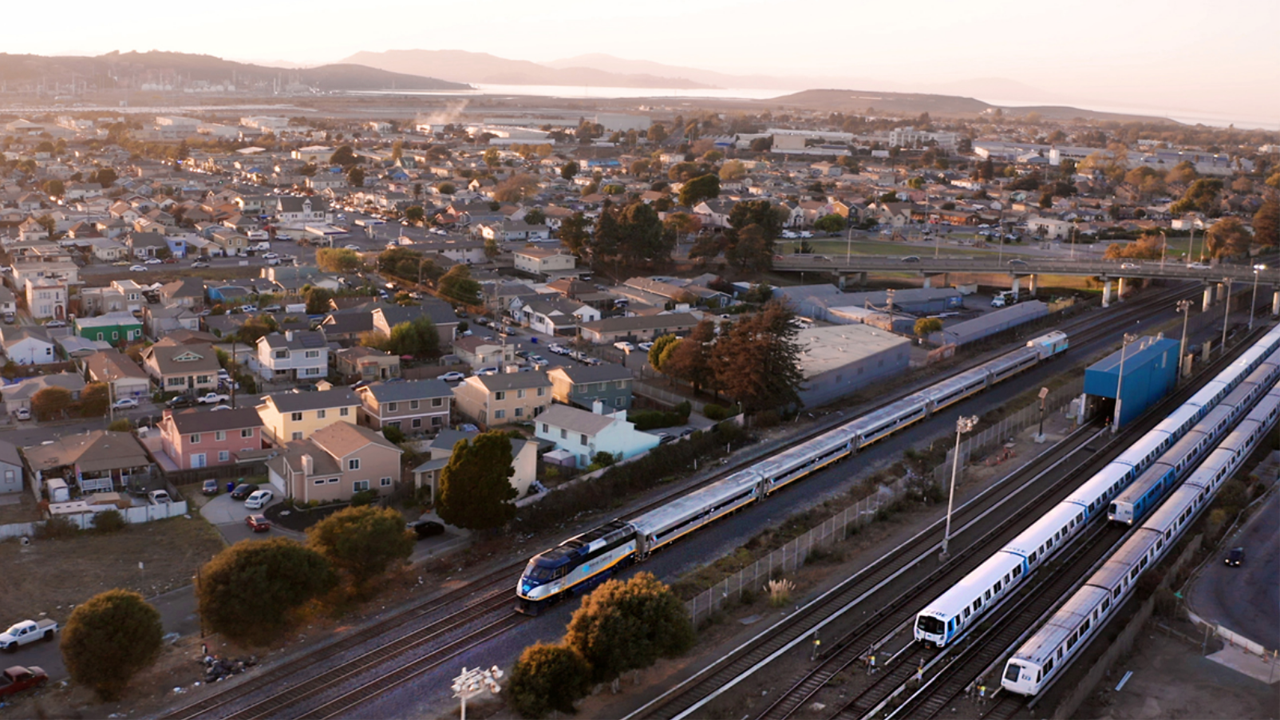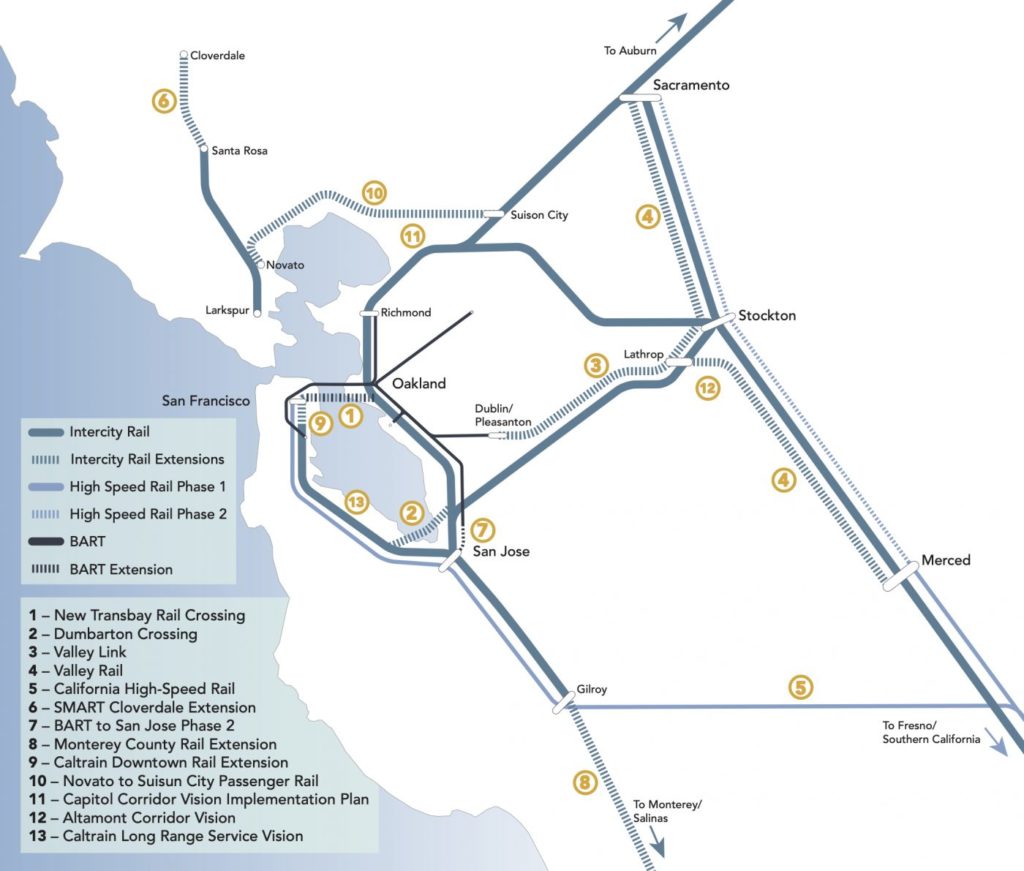
Report: Link21 Scaling Back?
Written by Marybeth Luczak, Executive Editor
Arup/WSP JV are providing planning and engineering services for Link21’s planned Transbay Rail Crossing, connecting Oakland and San Francisco. (Photo credit: Link21 Program)
The $29 billion Link21 initiative led by San Francisco Bay Area Rapid Transit (BART) and the Capitol Corridor Joint Powers Authority (CCJPA), with the aim of connecting BART with the region’s intercity, commuter and high speed passenger rail systems, like Amtrak and Caltrain, while also “connecting people sustainably to employment opportunities and affordable housing throughout the 21-county Northern California Megaregion,” may be scaled back.
One major project within the Link21 Program, first announced in January 2021, is a new four-track transbay rail crossing between Oakland and San Francisco. The new crossing “will increase capacity for the overcrowded corridor and will bring new passenger rail connections and services to the Megaregion, including potential for a direct, one-seat ride between Sacramento and San Francisco.” It is included in the regional Plan Bay Area 2050 Final Blueprint as “a key strategy for building a next-generation transit system.” The joint venture of Arup and WSP in September 2021 was selected to provide planning and engineering services for the program, which it said, will “help address the high levels of congestion in the existing Transbay corridor, as well as provide a direct connection for regional [commuter] rail riders.”
BART has allocated $110 million from its Measure RR bond, approved by voters in 2016, for project planning; the Metropolitan Transportation Commission (MTC) has also earmarked $50 million from Regional Measure 3 for the project; and the California State Transportation Agency (CalSTA) provides approximately $1 million annually, which is administered by Capitol Corridor.

Link21 planners reported in a Feb. 28 meeting of the project’s Equity Advisory Committee that the “crossing will now only be built for either BART or regional rail operators because the project as originally planned would not generate enough ridership,” according to the PleasantonWeekly.com.
“Link21 planning officials are expected to formally recommend an alignment concept for a second transbay rail crossing next year,” the news outlet reported on March 5.
The “six initial concepts of the second rail crossing—four for regional rail operators and two for BART—would all terminate at the Salesforce Transit Center in downtown San Francisco,” according to the PleasantonWeekly.com. “Five of the six concepts would also extend BART or regional rail service south through Oakland into Alameda before traversing the bay, while the sixth concept would build a rail crossing that sits parallel to the current transbay tube.”
In early 2022, Link21 moved from Phase 0: Program Definition into Phase 1: Project Identification, according to the program website. “While early work established Link21 Goals and Objectives and set the Program’s foundation, Phase 1 will build upon that to identify potential Link21 projects starting with a new underground train crossing of the San Francisco Bay.
“The Link21 team is working closely with agency partners, community stakeholders, and the public to identify and refine project concepts that will improve existing train service and access to diverse communities, specifically those that have been historically marginalized. Phase 1 lays the groundwork for investments in projects that Link21 and our partners could design and build to meet travel needs while preserving our quality of life for future generations.”
Download Link21’s October 2022 draft Market Analysis report here:



